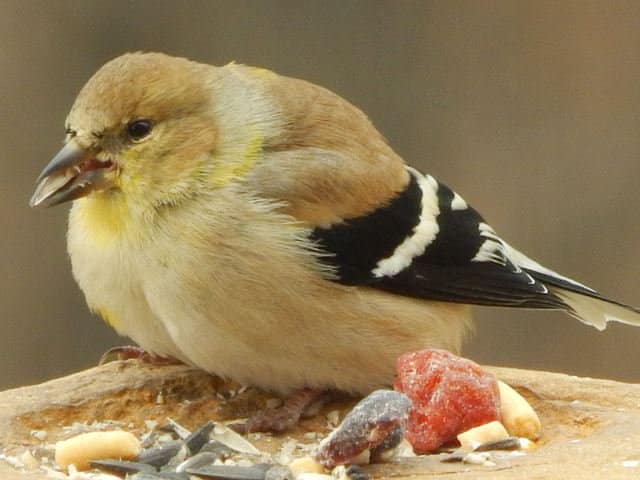Wild backyard birds live demanding lives. During the warm months of the year, they perform a variety of tasks critical to their survival, all while recovering from the fatigue and stress of their long migration north.
“Birds are constantly on the move,” says Elaine Cole, president and owner of Cole’s Wild Bird Products Co. “ A lot of energy is spent defending a territory, selecting a mate, and then hatching and raising the chicks before it’s time to migrate again. Just like for people, convenient food can be a life saver for birds. Less energy spent hunting means more energy for raising healthy babies.”

Bluebird (Cole’s Wild Bird Products)
What and how you feed the birds in your garden will determine if they stay to dine and thrive. But before your feathered friends show up in your yard, make sure your “accommodations are inviting,” says Cole. “Check that all baths and birdhouses are clean and in good repair. A quick rinsing with a mild bleach and warm water mixture or detergent gets rid of dirt, grime and mold.”

(Cole’s Wild Bird Products)
Also pay special attention to the menu in your yard. “By serving wild birds their favorite foods throughout the summer, you boost and build their stamina and reserves for the long winter ahead,” says Cole, who offers these feeding tips.
What to Feed Wild Birds
“Serve birds quick, easy food with the most nutrient/energy impact, such as suet kibbles, dried mealworms, raw peanuts, sunflower meats and fruit.”
Traditionally used for winter feeding, suet has come a long way and is not just for winter anymore, says Cole. “No-melt suet formulas make it the perfect protein for warm weather feeding, which is ideal for adult birds that bring their babies this nutritious food source as an easy, high energy meal.”
Mealworms are another nutritious bird food. “High in protein, fat and potassium, mealworms help birds maintain energy,” says Cole. “They’re favorites for species like bluebirds, flickers, woodpeckers, nuthatches, siskins and chickadees, and are a perfect food source for newborn nestlings. Handling live mealworms is probably not a welcome bird feeding experience, even for the most committed bird enthusiasts, which makes freeze-dried mealworms ideal. They have all of the nutritional benefits of fresh ones and are much easier to store and serve.”
 (Cole’s Wild Bird Products)
(Cole’s Wild Bird Products)
For seed-loving birds, serve up a blend that contains nuts, sunflower meats and dried fruits like apple, blueberry and cherry.
Combine suet, mealworms and fruit, nuts and seeds, and you’ll have a complete mix that attracts a wide variety of seed-eating and non-seed eating birds like warblers, bluebirds, kinglets, flickers and robins, which are all birds you don’t typically see at a feeder, says Cole.

Kalos Photography (Cole’s Wild Bird Products)
Further ensure that the birds dine at your house by growing plants that attract them. Good choices include honeysuckle, sunflower, Virginia creeper, oak and dogwood trees, cardinal flower and Echinacea.
Consider Your Bird Feeder Location
If you aren’t getting a lot of birds to your backyard and are serving up quality food, the bird feeder location is most likely the culprit, says Cole. “If a bird doesn’t feel safe eating at your feeder, then it simply won’t eat there. Don’t put feeders in wide open spaces. Birds prefer feeders to be near a bush or tree line so they have a quick escape if a hawk or another predator swoops in.”
Attaching a tray to the bottom of your tubular feeder also increases the variety of birds that can come to your feeder by providing a spot for larger birds (cardinal, robins, etc.) to perch and eat. The perches on standard tubular feeders are not big enough to allow the larger birds to feed.
Once you’ve set your birds up, “have fun and enjoy the view,” says Cole. “Watching birds lowers your blood pressure and helps keep all of life’s pressures in perspective.”
Julie Bawden-Davis is a garden writer and master gardener, who since 1985 has written for publications such as Organic Gardening, The American Gardener, Wildflower, Better Homes and Gardens and The Los Angeles Times. She is the author of seven books, including Reader’s Digest Flower Gardening, Fairy Gardening, The Strawberry Story Series, and Indoor Gardening the Organic Way, and is the founder of HealthyHouseplants.com.

